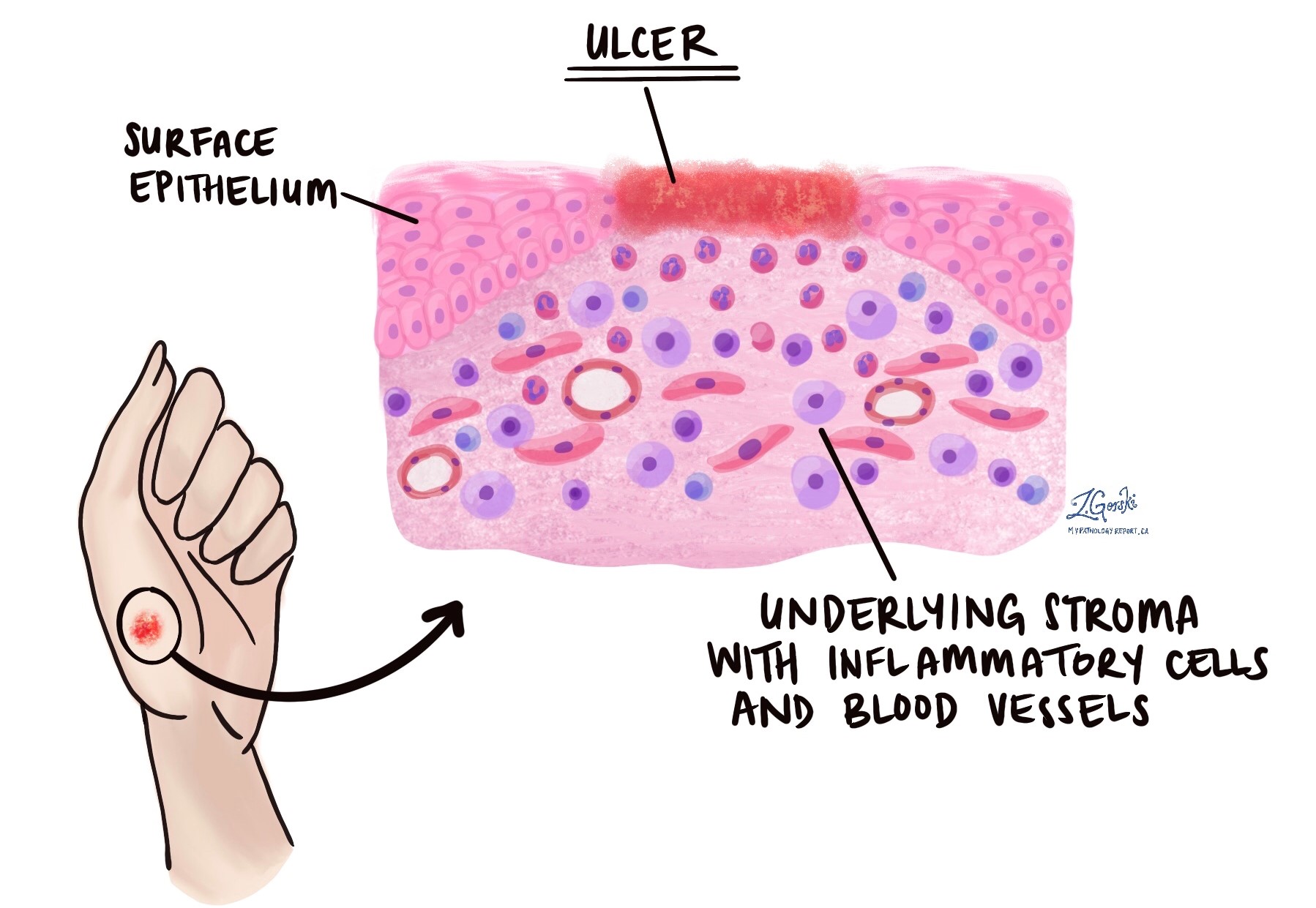MyPathologyReport
April 13, 2023
An ulcer is a type of injury where all of the cells that are normally found on the surface of a tissue are damaged or lost and the tissue below the surface is exposed. Common sites for ulcers include the skin, stomach, and oral cavity although they can develop anywhere in the body.
Why causes an ulcer?
An ulcer can be caused by any process that damages the cells on the surface of a tissue and prevents the tissue from healing normally. Common causes include trauma, infection, chronic inflammation, and medical treatment such as radiation therapy. A tumour under the surface of a tissue can also cause an ulcer, especially if the tumour is large or if the tumour cells spread into and directly damage the cells on the surface of the tissue. Some ulcers in the colon are a sign of inflammatory bowel disease such as ulcerative colitis.
What does an ulcer look like under the microscope?
The cells on the surface of a tissue are called epithelial cells and they form a barrier called the epithelium. The tissue below the epithelium is called the stroma. The epithelium protects the stroma from the environment both inside and outside of the body. When examined under the microscope, an ulcer shows a complete loss of cells in the epithelium. The underlying stroma that is exposed usually shows an increased number of inflammatory cells such as neutrophils, lymphocytes, plasma cells, and histiocytes. There may also be blood or byproducts of blood breakdown such as hemosiderin. A special type of tissue called granulation tissue may be seen as the ulcer starts to heal.
About this article:
This article was written by doctors to help you read and understand your pathology report. Contact us if you have questions about this article or your pathology report.




